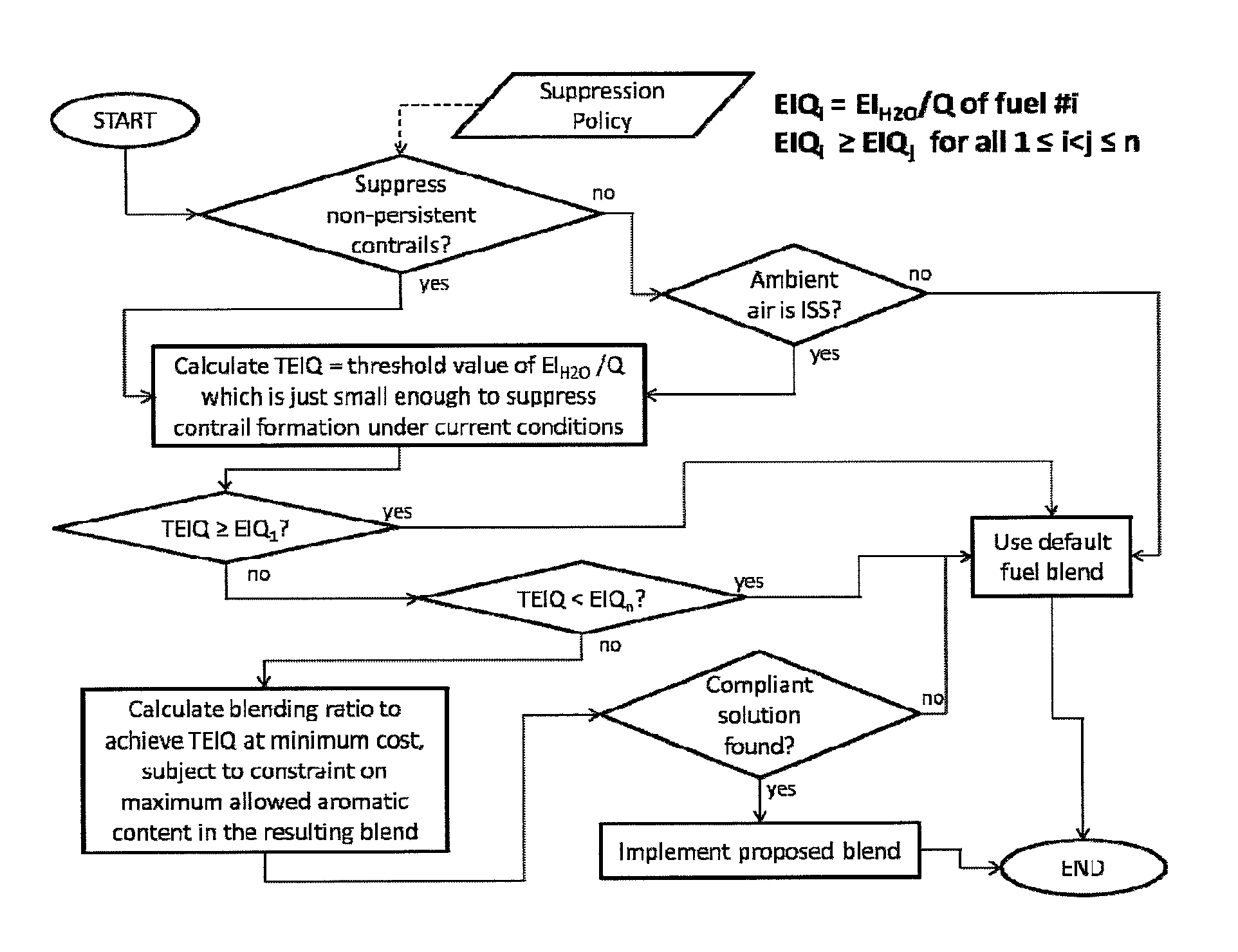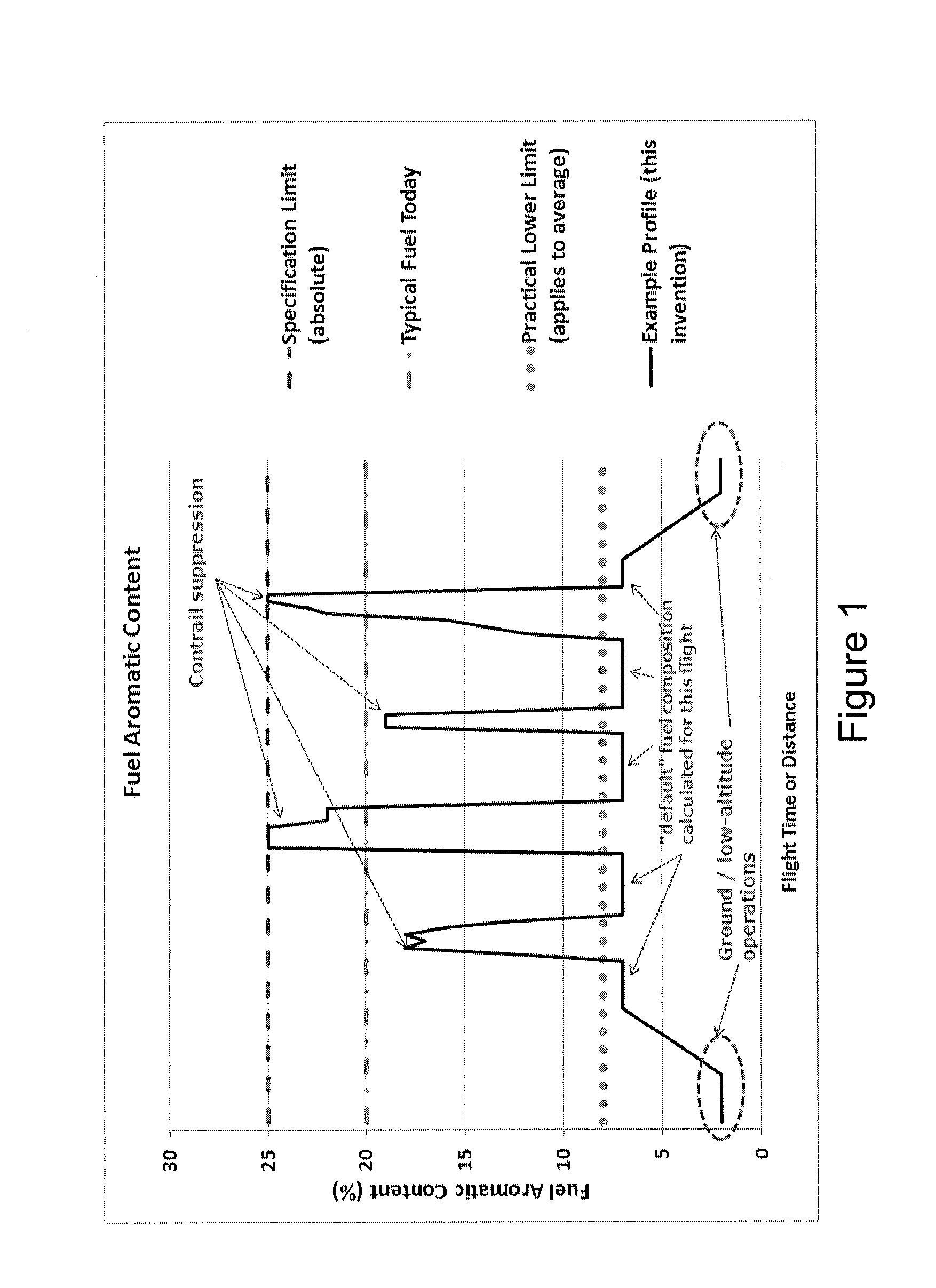Aircraft engine fuel system
- Summary
- Abstract
- Description
- Claims
- Application Information
AI Technical Summary
Benefits of technology
Problems solved by technology
Method used
Image
Examples
first embodiment
[0082]A first embodiment involves the blending together, onboard the aircraft, of a number of distinct fluid compositions to produce a final fuel composition which is then supplied to the engines. The final fuel composition may at different times of the flight consist of i) exclusively any one of the distinct fluid compositions, or ii) a mixture of some or all the distinct fluid compositions.
[0083]In principle, in embodiment (ii) it is not required that each and every one of the distinct fluid compositions is compliant with applicable fuel-specifications, provided that the final fuel composition is at all times compliant. For instance, one of the distinct fluid compositions could be characterised by an aromatic content that lies above the maximum permitted level for use in an engine. Said fluid composition would then be used as an “additive” to one or more of the other fluid compositions in order to raise the aromatic content of the final fuel composition to the desired value, provi...
second embodiment
[0107]the invention will now be described, which does not involve blending of the fuels on board the aircraft. This embodiment has the advantage that the fuel system is simpler in that it involves the switching between the distinct fluid compositions available on the aircraft. This embodiment therefore requires that each of the distinct fluid compositions loaded into the aircraft be compliant with all fuel specifications, for example such that each fuel composition lies at or below the predetermined upper threshold for aromatic content.
[0108]FIG. 5 illustrates an example of the decision making process required to identify which of the available fuel compositions should be employed according to the second embodiment. As with the first embodiment, the decision-making process is invoked whenever there is a material change in ambient conditions or in engine operating point.
[0109]Where the process is the same as described above, the stages will not be repeated for conciseness. The key di...
third embodiment
[0114]In a third embodiment, no fuel-blending or fuel-switching is performed on board the aircraft. As a result, there is no decision making to be performed on the aircraft and the aircraft engine can operate in a conventional manner. In this embodiment a determination of the composition of a single fuel type to be loaded onto the aircraft is made prior to a flight. The fuel composition will be tailored to one or any combination of the requirements of that particular flight; predetermined meteorological information for the flight path; historical data for the route, such as average requirements of the proposed route at the time of year or else operational data (e.g. contrail detection or suppression data) from a previous flight of the route.
[0115]FIG. 6 shows the aircraft-mounted fuel-system corresponding to the first embodiment. Within the diagram, solid arrows indicate the flow of fluid, while dashed arrows indicate the flow of data or instructions.
[0116]Distinct sources 20 and 22...
PUM
 Login to View More
Login to View More Abstract
Description
Claims
Application Information
 Login to View More
Login to View More - R&D
- Intellectual Property
- Life Sciences
- Materials
- Tech Scout
- Unparalleled Data Quality
- Higher Quality Content
- 60% Fewer Hallucinations
Browse by: Latest US Patents, China's latest patents, Technical Efficacy Thesaurus, Application Domain, Technology Topic, Popular Technical Reports.
© 2025 PatSnap. All rights reserved.Legal|Privacy policy|Modern Slavery Act Transparency Statement|Sitemap|About US| Contact US: help@patsnap.com



